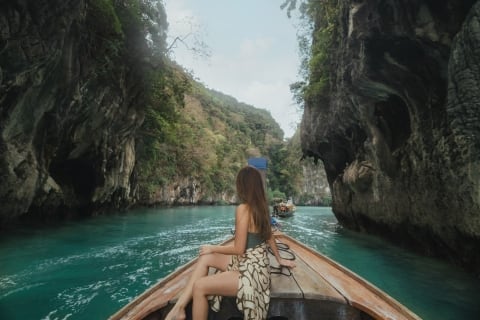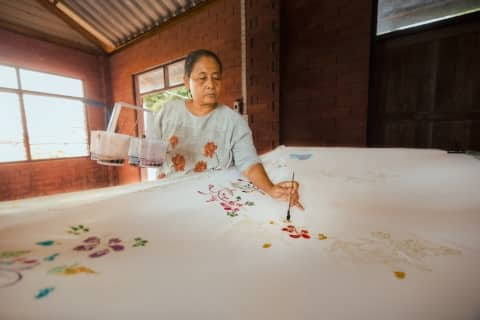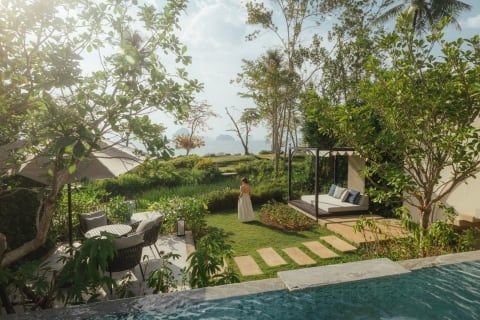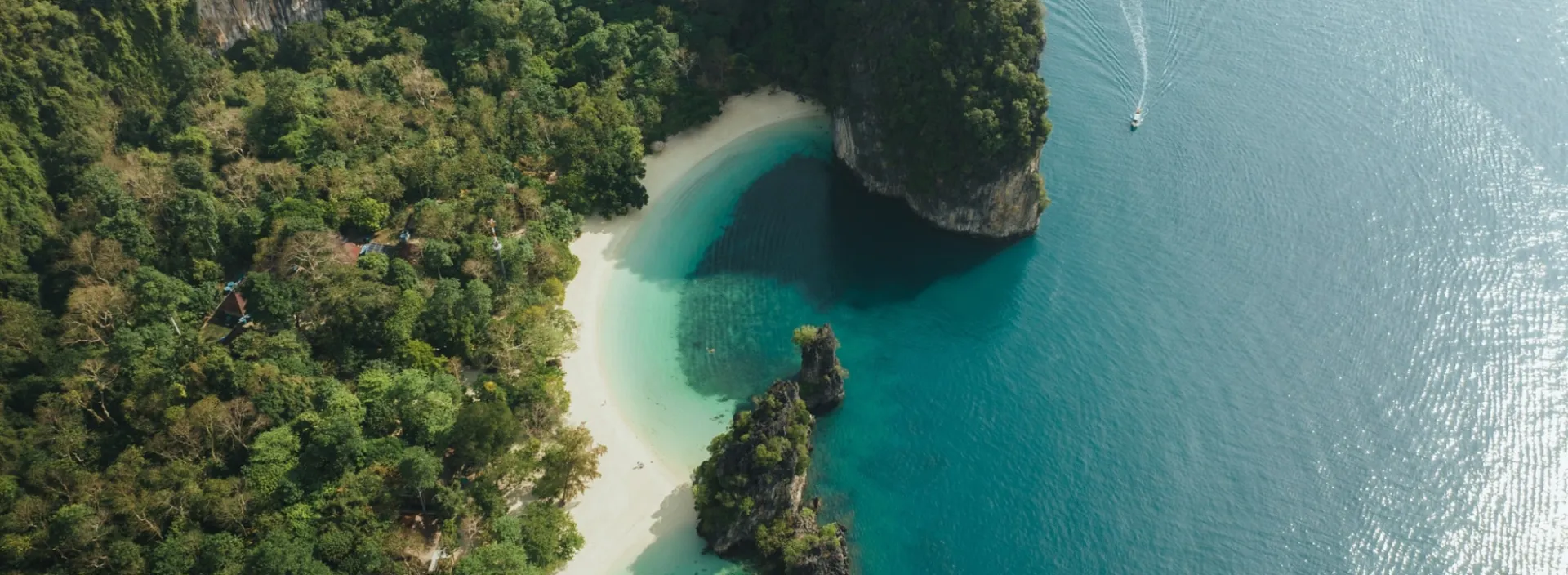OVERVIEW
The island of Ban Koh Klang in Krabi is home to a community of locals who earn a living through trade, fishing and rice farming. Discover their traditional way of life through the mangrove forests that sustain their livelihoods, and the intricate handicrafts that lend insight into their culture.
- 29/08/2024
- 6 minutes
The lush island of Ban Koh Klang is a 26-sq-km mass of land that lies between the Krabi River and the Andaman Sea. Just a 10-minute ferry ride from Chao Fah Pier, this island is a world away from the bright lights of the mainland, but unlike much of the coastline, the major draw isn’t a beach.
Instead, people come to witness the lives and culture of the 5,000-strong, majority Muslim population, which earns its living from fishing, trade and rice farming. Small-scale tourism allows locals to welcome visitors into their homes, farms and businesses, while earning valuable funds to help preserve their traditions and environment.

Exploring the environment
Thrumming with bird and insect life, the lush mangroves surrounding Ban Koh Klang are a treasured natural attraction. They are popular for kayak or long tail boat excursions through tranquil, forested channels, to spot fish eagles, herons and storks and learn about the importance of mangroves to the island’s ecosystem.
Mangrove forests are under threat across the world, and they’re crucial to keeping Ban Koh Klang thriving. They provide important habitats that support hundreds of species of wildlife, act as a buffer to protect the land from wind and wave damage, and have root systems that filter nitrates, phosphates and other pollutants from the water. They also absorb high amounts of carbon, making them an essential ally in the fight against climate change.
On Ban Koh Klang, community members protect the mangroves by regularly clearing rubbish and pollutants, removing weeds and restricting the development of new dwellings and fish farms. Planting programmes have also been established to help regenerate depleted forests.
Further island exploration reveals vast swathes of rice fields, where farmers have been following the same rice planting techniques for generations. Villagers work together in the fields, planting young rice in August and harvesting in December, using leftovers like husks and hay to make natural fertiliser. The resultant sang yod rice has a colourful red hue and a distinctive flavour, said to come from the high salinity in the island’s soil. Organised tours take in rice fields and farms as well as the community rice mill where guests can get hands-on with traditional machines used to de-husk and pound rice grains.

Craft and community
Ban Koh Klang is also home to a number of arts and craft cooperatives that provide an insight into the island’s cultural heritage, by allowing visitors to participate in workshops or take home handmade products as souvenirs.
Tie dye and batik are both longstanding traditions here, and local women run small businesses teaching visitors their trade. To create tie dye patterns, cloth is tied around pieces of wood, boiled in natural dyes made from berries, turmeric roots and other foraged items, then soaked in water to fix the colour. At batik workshops, patterns are drawn on cloth using beeswax and then coloured with natural dyes — a craft passed on from generation to generation.
An iconic symbol of southern Thailand, long tail boats originated in this region and remain popular due to their high bow, which allows them to keep their balance even in rough seas. Carving tiny replicas of these boats became a craft of its own in 2002, when Krabi authorities chose a souvenir to represent the province, and a model boat group was later founded thanks to training from local authorities and the United Nations.

Delve into the traditional and industrious way of life at Ban Koh Klang when you stay at our idyllic beachfront resort, Banyan Tree Krabi.
